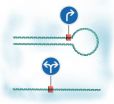(Press-News.org) The critically endangered Puerto Rican Parrot (Amazona vittata) is the only surviving parrot species native to the United States. A genomic sequencing project, funded by community donations, has published today, in BioMed Central and BGI's open access journal GigaScience, the first sequence of A. vittata, the first of the large Neotropical Amazona birds to be studied at the genomic level.
The Puerto Rican Parrot was once abundant throughout Puerto Rico but destruction of old forest habitats to make way for farming in the 19th Century resulted in a drastic decline in their population. By the mid 1970's only a handful of individuals were thought to remain. Captive breeding programs in Rio Abajo and El Yunque and the release of these birds have had some success, but the number of these birds in the wild is still very low.
In a unique initiative (developing of the Local Community Involvement), funded entirely by contributions from the communities of Puerto Rico alongside staff and students from the Biology Department of the University of Puerto Rico at Mayagüez, researchers collaborated internationally to sequence this beautiful parrot.
Dr Taras Oleksyk, who organized the The Puerto Rican Parrot Genome Project, explained their findings, "In this project we managed to cover almost 76% of the A. vittata genome using money raised in art and fashion shows, and going door to door asking for the support of Puerto Rican people and local businesses. When we compared our sequence of our parrot, Iguaca, from Rio Abajo to other species of birds, we found that she had 84.5% similarity to zebra finches and 82.7% to a chicken, but her genome was highly rearranged."
Dr Oleksyk continued, "We are very proud of our project and even more proud to be part of a local community dedicated to raising awareness and furthering scientific knowledge of this endangered bird. All the data from this project is publically available in GigaDB which we hope will be a starting point for comparative studies across avian genome data, and will be used to develop and promote undergraduate education in genome science in the Caribbean. Community involvement may be the key for the future of conservation genetics, and many projects like this are needed reverse the current rate of extinction of birds across the globe."
INFORMATION:
Media contact
Dr Hilary Glover
Scientific Press Officer, BioMed Central
Tel: +44 (0) 20 3192 2370
Mob: +44 (0) 778 698 1967
Email: hilary.glover@biomedcentral.com
Notes to Editors
1. A Locally Funded Puerto Rican Parrot (Amazona vittata) Genome Sequencing Project Increases Avian Data and Advances Young Researcher Education
Taras K Oleksyk, Jean-Francois Pombert, Wilfried Guiblet, Brian Ramos, Anyimilehidi Mazo, Christina T Ruiz-Rodriguez, Michael L Nickerson, Yashira Afanador, Daniel Siu, Ricardo Valentin, Luis Figueroa, Michael Dean, David M Logue and Juan-Carlos Martinez-Cruzado
GigaScience 2012, 1:14
Please name the journal in any story you write. If you are writing for the web, please link to the article. All articles are available free of charge, according to BioMed Central's open access policy.
Please credit pictures to Jose Almodovar
Genomic data of the Puerto Rican Parrot (Amazona vittata) from a locally funded project
Oleksyk, TK; Guiblet, W; Pombert, JF; Valentin, R; Martinez-Cruzado, JC
GigaScience.
2. GigaScience aims to revolutionize data dissemination, organization, understanding, and use. An online open-access open-data journal, we publish 'big-data' studies from the entire spectrum of life and biomedical sciences. To achieve our goals, the journal has a novel publication format: one that links standard manuscript publication with an extensive database that hosts all associated data and provides data analysis tools and cloud-computing resources. @GigaScience
3. BioMed Central (http://www.biomedcentral.com/) is an STM (Science, Technology and Medicine) publisher which has pioneered the open access publishing model. All peer-reviewed research articles published by BioMed Central are made immediately and freely accessible online, and are licensed to allow redistribution and reuse. BioMed Central is part of Springer Science+Business Media, a leading global publisher in the STM sector. @BioMedCentral
4. Parrot sequencing data is also fully available as raw reads in the ENA (Accession # PRJEB225) and as scaffolds with assembly parameters in GenBank (Accession # PRJNA171587)
5. The Puerto Rican Parrot Genome project at the University of Puerto Rico-Mayaguez, (http://genomes.uprm.edu/drupal/?q=parrot), can be found at http://www.facebook.com/amazona.vittata
Big science: Local funding supports open-access sequencing of the Puerto Rican Parrot genome
2012-09-28
ELSE PRESS RELEASES FROM THIS DATE:
Ancient stinging nettles reveal Bronze Age trade connections
2012-09-28
A piece of nettle cloth retrieved from Denmark's richest known Bronze Age burial mound Lusehøj may actually derive from Austria, new findings suggest. The cloth thus tells a surprising story about long-distance Bronze Age trade connections around 800 BC. The findings have just been published in Nature's online journal Scientific Reports.
2,800 years ago, one of Denmark's richest and most powerful men died. His body was burned. And the bereaved wrapped his bones in a cloth made from stinging nettle and put them in a stately bronze container, which also functioned as urn.
Now ...
The true costs of cancer in Europe revealed
2012-09-28
Vienna, Austria, 28 September 2012 – New studies that reveal for the first time the real economic and human costs of caring for cancer patients in Europe will be presented during the ESMO 2012 Congress of the European Society for Medical Oncology in Vienna.
"Here we have two studies of enormous importance," noted Prof Peter Boyle, President of the International Prevention Research Institute in Lyon, France, Member of the ESMO Faculty group on Cancer Prevention, who was not involved in the studies. "It is essential to have knowledge of the total costs of cancer and Dr ...
'Carmaheaven': Closure of 405 in 2011 improved air quality up to 83 percent
2012-09-28
Take the time to enjoy a deep breath next weekend when the 405 freeway closes for Carmageddon II. If it's anything like last year, the air quality is about to get amazing.
In study findings announced Sept. 28, UCLA researchers report that they measured air pollutants during last year's Carmageddon (July 15) and found that when 10 miles of the 405 closed, air quality near the shuttered portion improved within minutes, reaching levels 83 percent better than on comparable weekends.
Because traffic dipped all over Southern California that weekend, air quality also improved ...
Electrons confined inside nano-pyramids
2012-09-28
Quantum dots are nanostructures of semiconducting materials that behave a lot like single atoms and are very easy to produce. Given their special properties, researchers see huge potential for quantum dots in technological applications. Before this can happen, however, we need a better understanding of how the electrons "trapped" inside them behave. Dresden physicists have recently observed how electrons in individual quantum dots absorb energy and emit it again as light. Their results were recently published in the journal "Nano Letters".
Quantum dots look like miniscule ...
Loop the loop, DNA style
2012-09-28
In certain toy racecar tracks, sneaky players can flip a switch, trapping their opponents' vehicles in a loop of track. Cells employ a less subtle approach: they change the track's layout. In a study published online today in Science, scientists at the European Molecular Biology Laboratory (EMBL) and Oxford University discovered that, by forming or undoing gene loops, cells manipulate the path of the transcription machinery – which reads out instructions from DNA – controlling whether it moves along the genetic material in one direction or two.
"We found that gene loops ...
Nanosciences: All systems go at the biofactory
2012-09-28
In order to assemble novel biomolecular machines, individual protein molecules must be installed at their site of operation with nanometer precision. LMU researchers have now found a way to do just that. Green light on protein assembly!
The finely honed tip of the atomic force microscope (AFM) allows one to pick up single biomolecules and deposit them elsewhere with nanometer accuracy. The technique is referred to as Single-Molecule Cut & Paste (SMC&P), and was developed by the research group led by LMU physicist Professor Hermann Gaub. In its initial form, it was only ...
What makes surgeons happy?
2012-09-28
TORONTO, Sept. 28, 2012—Lack of control over operating rooms and other resources as well as a lack of work-life balance are among the main reasons general surgeons may be dissatisfied with their jobs, a new study has found.
The study was led by Dr. Najma Ahmed, a trauma surgeon at St. Michael's Hospital, at a time when both the Association of American Medical Colleges and the Canadian Medical Association have reported a decline in the number of general surgeons due to low recruitment, poor retention and early retirement.
Dr. Ahmed said that since the general surgery ...
Study ties early menopause to heart attack, stroke
2012-09-28
Women who experience early menopause are more likely to have a heart attack or stroke than women whose menopause occurs at a later age, according to a new study by Melissa Wellons, M.D., assistant professor of Medicine in the Vanderbilt Division of Diabetes, Endocrinology and Metabolism.
Wellons conducted the research while working at the University of Alabama-Birmingham and it is published in the current issue of Menopause: The Journal of The North American Menopause Society.
She said the study is especially important because cardiovascular disease is the leading cause ...
When your eyes tell your hands what to think
2012-09-28
EVANSTON, Ill. --- You've probably never given much thought to the fact that picking up your cup of morning coffee presents your brain with a set of complex decisions. You need to decide how to aim your hand, grasp the handle and raise the cup to your mouth, all without spilling the contents on your lap.
A new Northwestern University study shows that, not only does your brain handle such complex decisions for you, it also hides information from you about how those decisions are made.
"Our study gives a salient example," said Yangqing 'Lucie' Xu, lead author of the ...
Study reveals wide discrepancy in multidrug surveillance among intensive care units
2012-09-28
Washington, DC, September 28, 2012 – Screening practices for multidrug-resistant organisms (MDROs) in intensive care units (ICUs) vary widely from hospital to hospital, according to a new study published in the October issue of the American Journal of Infection Control, the official publication of the Association for Professionals in Infection Control and Epidemiology (APIC).
The P-NICE interdisciplinary research team from the Columbia University School of Nursing collected and analyzed survey responses from the infection preventionists (IPs) of 250 hospitals that participated ...



